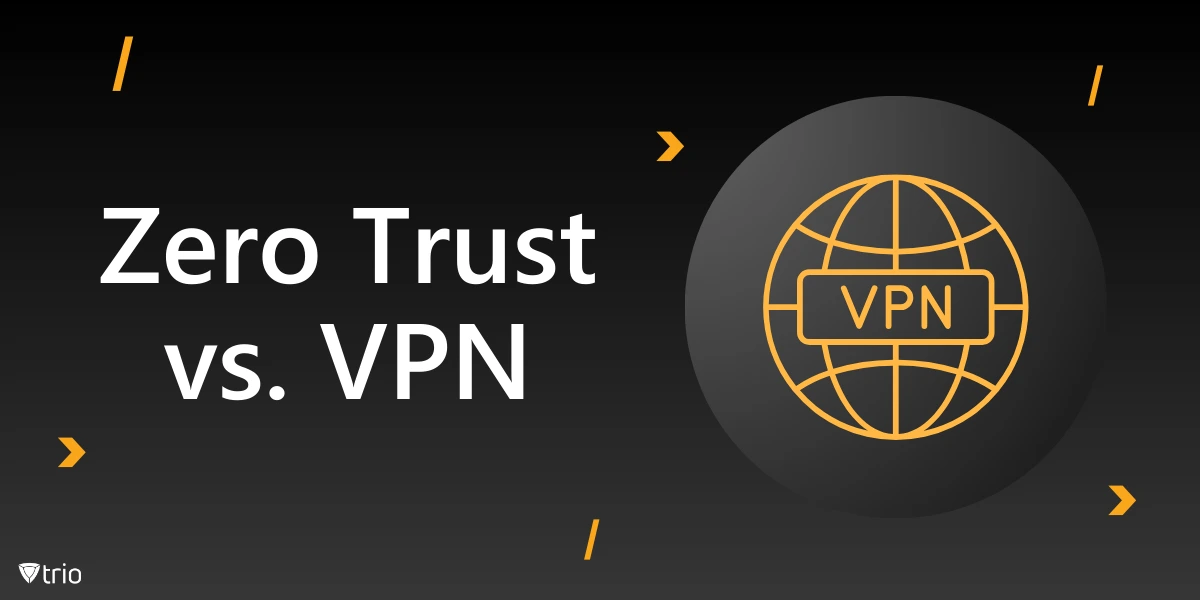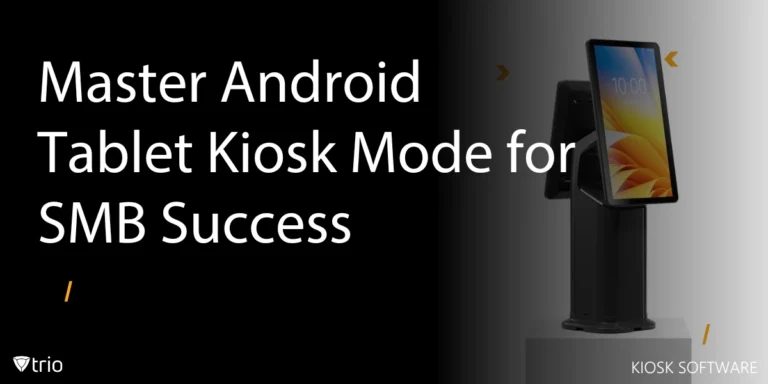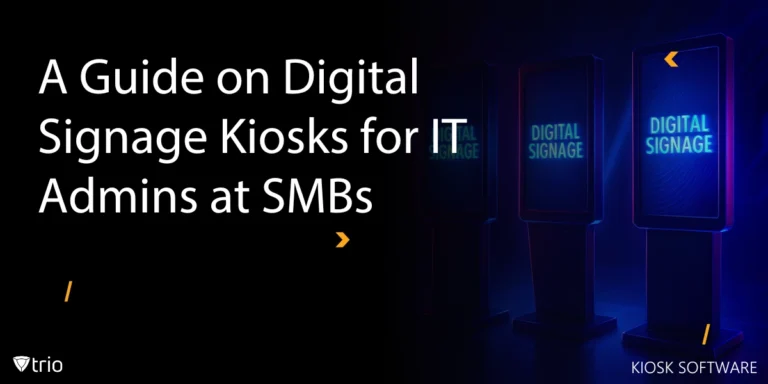In an era where cyber threats constantly evolve, securing data and network access is more critical than ever. IT professionals need to understand the best security strategies to protect remote users and their sensitive information. Two popular security models often compared are Zero Trust Network Access (ZTNA) and Virtual Private Networks (VPNs). Each has its strengths, weaknesses, and specific use cases. So, which one should you choose? Let’s break down the debate of Zero Trust vs. VPN to help you make an informed decision.
Understanding the Basics of Zero Trust and VPN
Before being able to choose which security model is a better fit for your business, it's necessary to understand the basics of both ZTNA and VPNs.
What Is a VPN?
A Virtual Private Network (VPN) has long been the go-to security solution for organizations that need to secure remote access to corporate resources. VPNs work by creating encrypted tunnels through which data travels, hiding it from external threats. This traditional VPN method allows remote users to access corporate networks as if they were physically present in the office.
VPN solutions are based on a trust model that assumes users and devices with access to the VPN are secure. Once gained access, remote users can interact with corporate resources without needing further authentication. This simplicity, however, can also be a security risk, especially when dealing with modern, multi-factor authentication (MFA) security needs.
What Is Zero Trust?
In contrast, Zero Trust Network Access (ZTNA) is a more modern approach that shifts away from the trust-based model of VPNs. As the name suggests, Zero Trust assumes no user or device is automatically trustworthy, regardless of whether they are inside or outside the corporate network. This model verifies every user or device trying to access an application or resource in real time.
In essence, Zero Trust Network Access is a "never trust, always verify" model, ensuring only authenticated users and devices gain the exact amount of access they need for their tasks. ZTNA solutions take a granular approach, making it much harder for malicious actors to infiltrate a network, as their access is limited to specific applications.
Zero Trust vs. VPN: Pros and Cons
When comparing Zero Trust and VPN, each offers distinct advantages and disadvantages depending on your security needs. Understanding the pros and cons of both can help you determine which approach best suits your organization’s infrastructure and risk tolerance.
Pros:
- Familiarity and Ease of Use: VPNs are widely adopted and familiar to most IT teams. They offer a straightforward solution for enabling secure connections for remote employees.
- Broad Access: Once authenticated, VPN users typically have full access to corporate resources, which can be convenient for certain tasks.
- Compatibility: VPNs can work well with a wide variety of systems and devices, ensuring smooth operation in legacy environments.
Cons:
- Over-Trusting Model: The major downside of VPNs is that they are often too trusting. Once a user is in, they have extensive access to the network, increasing the risk of breaches.
- Performance Issues: Traditional VPNs can suffer from latency, especially with increased remote users, leading to poor performance and productivity loss.
- Limited Granular Control: VPN solutions provide limited control over specific applications, making it difficult to restrict application access without restricting the entire network.
Zero Trust: Pros and Cons
Pros:
- Enhanced Security: The biggest advantage of Zero Trust is its real-time authentication, ensuring that no user or device can access corporate resources without constant verification.
- Granular Access Control: ZTNA provides bases access to only the required applications and resources, reducing the potential impact of a security breach.
- Scalability: Zero Trust is designed for the cloud-first era, making it easier to secure modern infrastructure, applications, and remote workforces.
Cons:
- Complexity: Zero Trust Network Access can be more complex to implement than a VPN solution, especially for organizations with legacy systems.
- Initial Setup Costs: While ZTNA solutions are scalable, initial deployment and configuration may involve higher upfront costs compared to traditional VPNs.

Key Differences Between Zero Trust Network Access and VPN
Zero Trust Network Access (ZTNA) and VPNs differ fundamentally in how they manage security and trust. Let’s explore these differences through two critical aspects: security control and the trust model.
Trust Model
The primary distinction between VPNs and ZTNA is the trust model they use. While virtual private networks operate on a model of implicit trust, as mentioned before, trust network access (ZTNA) operates under the principle of "never trust, always verify." This constant verification ensures that secure connections are maintained.
VPNs assume that once users are authenticated, they are trusted to access the network freely. On the other hand, Zero Trust only provides gained access on a need-to-know basis, limiting exposure in the event of a breach.
Security Control
ZTNA solutions allow more granular control over who can access specific applications or data. By contrast, VPNs grant users broad access, potentially exposing more data in the event of an attack. This distinction makes Zero Trust a stronger option for businesses prioritizing trust security and limiting the movement of threats within the network.
ZTNA also integrates more seamlessly with multi-factor authentication (MFA) and other advanced security methods, ensuring a higher level of security at every step of the access process.
Real-World Use Cases: When to Choose Zero Trust vs. VPN
Choosing between Zero Trust and VPN largely depends on the specific needs of your organization. By comparing use cases, we aim to make it easier for you to choose between the models.
When to Use VPNs
For organizations that require simple, secure access to corporate resources for remote users, especially those that don't handle highly sensitive data, VPNs can be sufficient. VPN solutions work well for businesses with smaller, static teams that need consistent access to the same resources.
VPNs are also easier to implement in environments where legacy systems are in place, as these systems may not always integrate smoothly with modern ZTNA solutions.
When to Use Zero Trust
For organizations handling sensitive information, such as those in finance, healthcare, or tech, Zero Trust Network Access is a better choice. ZTNA ensures that even if a breach occurs, attackers cannot easily move laterally within the network. Businesses that require secure connections across multiple cloud environments will also benefit from Zero Trust VPN Cloudflare integrations or similar security setups.
ZTNA solutions are especially useful for managing remote users, who often connect from various networks and devices, making it harder to trust any single connection.

How Trio Can Help with Zero Trust vs. VPN
When deciding between Zero Trust vs. VPN for your business, Trio can play a crucial role. Trio offers comprehensive ZTNA integration that complements the Zero Trust Architecture, making it easier for businesses to adopt a Zero Trust Network Access model.
With features like device management, multi-factor authentication, and real-time access control, Trio ensures that only authenticated users gain access to the applications and resources they need. Whether you’re transitioning from a traditional VPN or need a hybrid security model, Trio offers the tools to make the switch seamless.
Interested in learning more? Sign up for a free demo today and discover how we can help your business achieve top-tier device management to improve security.
Conclusion
In the debate of Zero Trust vs. VPN, there is no one-size-fits-all solution. Zero Trust Network Access vs VPN brings different strengths to the table, depending on your business's unique needs. VPNs are tried and true, offering simple security for smaller teams, while Zero Trust provides more robust protection for modern, cloud-based infrastructure. Evaluating the pros and cons of each security solution will help you decide which best aligns with your organization’s goals.
Get Ahead of the Curve
Every organization today needs a solution to automate time-consuming tasks and strengthen security.
Without the right tools, manual processes drain resources and leave gaps in protection. Trio MDM is designed to solve this problem, automating key tasks, boosting security, and ensuring compliance with ease.
Don't let inefficiencies hold you back. Learn how Trio MDM can revolutionize your IT operations or request a free trial today!





